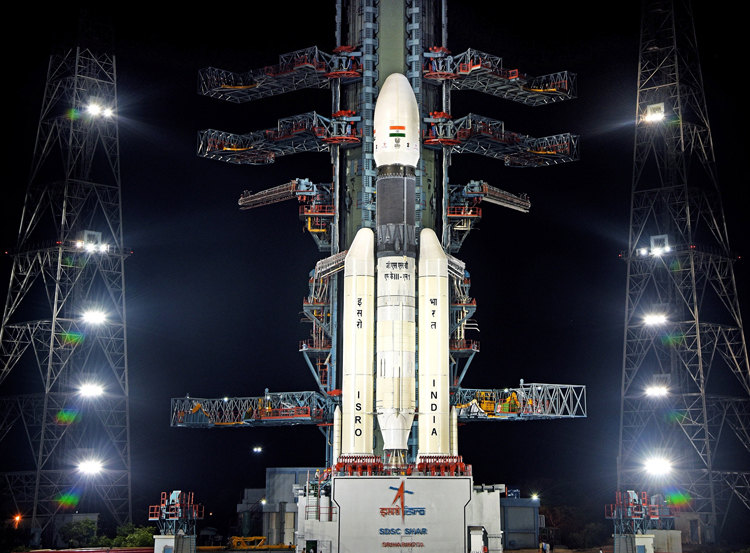INDIAN ARMED FORCES CHIEFS ON
OUR RELENTLESS AND FOCUSED PUBLISHING EFFORTS

SP Guide Publications puts forth a well compiled articulation of issues, pursuits and accomplishments of the Indian Army, over the years

I am confident that SP Guide Publications would continue to inform, inspire and influence.

My compliments to SP Guide Publications for informative and credible reportage on contemporary aerospace issues over the past six decades.
Temporary setback for mission to the Moon
ISRO plans to send three Indians into space on an Indian-built spacecraft achieving the first manned mission into space.
 |
The Author is Former Air Officer Commanding-in-Chief of Training Command, IAF |

The launch of Chandrayaan-2, India's second mission to the Moon that is being undertaken by the Indian Space Research Organisation (ISRO), was called off 56 minutes before the scheduled time for lift-off in the early hours of Monday, July 15, 2019. Launch of the GSLV Mk III carrying the Orbiter, the Lander named Vikram and the Rover named Pragyaan, was to take place from the Satish Dhawan Space Centre on the island of Sriharikota, located around 80 km North of Chennai. The first mission to the Moon, Chandrayaan-1, was successfully launched by ISRO on October 22, 2008 and was completed in August 2009. For Chandrayaan-1, the launch vehicle employed was the PSLV-XL, the most reliable workhorse of ISRO, which carried the Orbiter and the Impactor. Unlike Chandrayaan-1, the second mission aims at a soft landing on the Lunar surface and thereafter release the Rover for the planned series of experiments.
The launch of Chandrayaan-2 mission had to be aborted as during the countdown, the team of scientists at ISRO headed by the Mission Director, discovered a technical problem. Fuel pressure in the third stage of the launch vehicle was observed to be lower than required and was reducing. This was indicative of a possible leak in the fuel tank carrying helium. As a launch with this technical snag could well have led to an explosion and destruction of the GSLV along with its payload, the Mission Director took what undoubtedly was the most appropriate decision under the circumstances that is to stop the countdown, analyse the problem and rectify the technical snag before the next available launch window or as soon as possible thereafter and prepare for the next launch window. The revised date for the launch of Chandrayaan-2 would depend on how soon ISRO is able to analyse the technical problem and carry out foolproof rectification. It is understood that ISRO has faced such a snag in missions in the past and hence it should not be a difficult problem to solve.
Although there was some disappointment for the nation as also for ISRO on account of the aborted mission especially as the President of India was present to witness this momentous event, postponement of the launch was certainly a better option than risking traumatisation of the nation apart from the total loss of the 1000 crore worth of investment in this ambitious venture. The situation did warrant abundant precaution on the part of ISRO.
The Chandrayaan-2 mission is planned to begin with placing the Orbiter in Lunar orbit where it will remain for about a year and study the outer atmosphere of the Moon. Once the Orbiter is in place, the Lander Vikram will detach from it and carry out a soft landing near the South Pole of the Moon. The Rover Pragyaan will then exit the Lander and traverse the lunar surface for around 14 days, performing surface and sub-surface experiments that would have been pre-programmed. Soon after emerging from the Lander, the Rover will begin sending pictures of the Lunar surface to ground stations of ISRO. In addition, Chandrayaan-2 will be programmed to carry out tests to collect and transmit more information on the presence of water on the surface of the Moon, a discovery that is credited to the Chandrayaan-1 mission over a decade ago. But one reason why the success of Chandrayaan-2 mission is of critical importance not only for ISRO, but for the nation as well is that the next venture planned by the organisation is even more ambitious and of immense national importance. ISRO has plans to send three Indians into space on an Indian-built spacecraft strapped onto an Indian launch vehicle. This will be first manned mission into space undertaken by ISRO.





